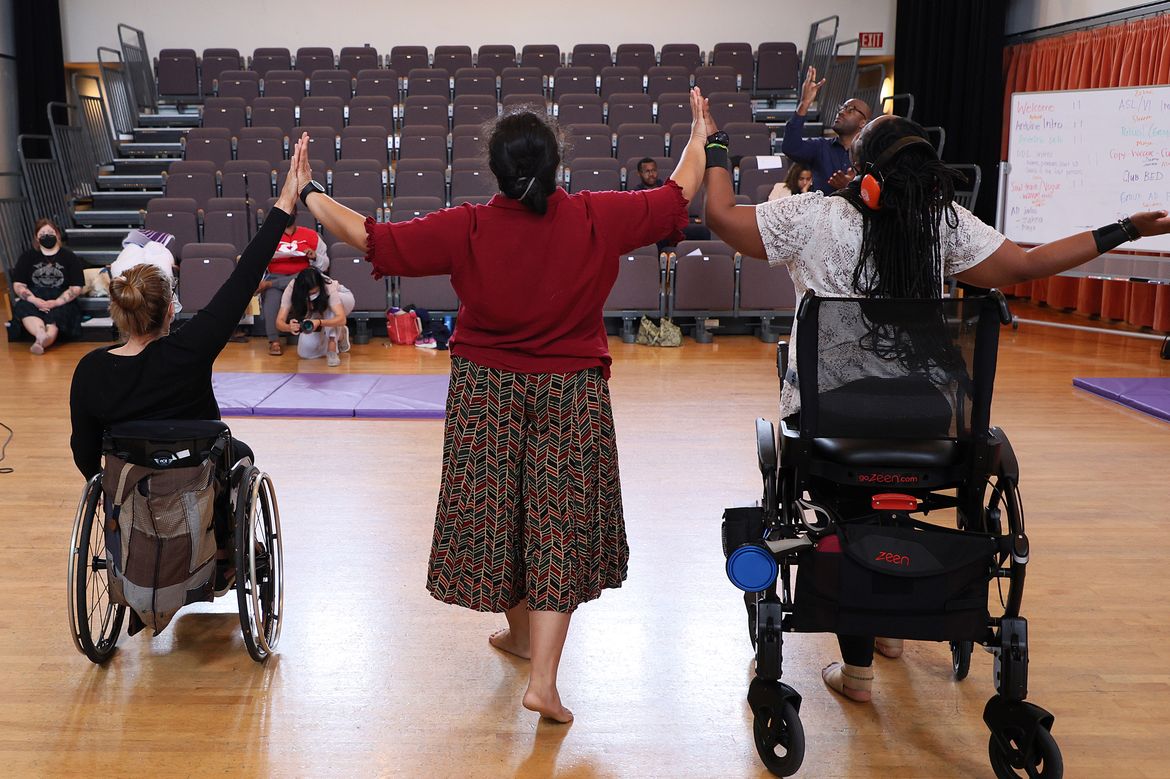Due in part to the overwhelming popularity of UCLA’s disability studies minor, which it has offered for 16 years, the campus is offering a new disability studies interdepartmental major, the first of its kind at a California State University.
The new major is expected to accept its first students in the fall 2023 semester, and the hiring of two new faculty members will expand the program’s capacity from an existing minor established in 2007.
While many schools across the country offer applied programs focused on rehabilitation, diagnosis and services, they tend to view disability as a problem to be fixed. These programs often ignore the ways in which disability is produced and reinforced by society and the active role of disability culture in creating a more inclusive society, said Victoria Marks, a choreography professor and chair of the new major and department director of the Dance Disability Lab in the Department of World Arts and Cultures/Dance at the UCLA School of Arts and Architecture.
“Disability studies as a discipline sees bodily diversity not as something to be repaired or fixed, but as intersecting identities that are constructed by the way access is shaped, cities are built, and laws are enacted,” Marks said. “UCLA’s new major will be one of the few programs that looks at disability as a historical, social, cultural and political experience, and examines the ways in which society, culture, institutions, spaces and ideas systemically and socially produce disability.”
Marks pointed to curb cuts, which are ramps at road corners and intersections, as an example. Before Congress passed the Americans with Disabilities Act in 1990, ramps weren’t required, and curbs presented obstacles for people who couldn’t climb the steps comfortably. ADA-enforced curb cuts remove obstacles not only for people who regularly or temporarily need wheelchairs and other mobility devices, but also for parents with strollers, shoppers with carts and cyclists.
The 2023 Dancing Disability Lab cohort in action. Courtesy of Juan Taro.
“Disability studies challenges all of us to consider how society is structured to create the identity of disability,” Marks said. “It challenges us to rethink ‘normal’ and make visible the implicit ableism that comes naturally to many of us.”
In 1994, Syracuse University in New York became the first university in the United States to develop a disability studies program, and in 2003 the University of California, Berkeley, became the first California university to create a minor in the field, although the major remains rare.
“In a disability studies major, we think about who is telling the stories of people with disabilities, what stories have been told about disability, and how we can imagine and build the future,” Marks says. “Ensuring disability access isn’t just important for people with disabilities. Paying attention to human diversity and the different ways we move through spaces, both manmade and digital, benefits everyone.”
The interdisciplinary major, located within the Undergraduate Education Initiative, includes a new introductory course, “Constructing Ability (Disability) and Ability Discrimination in the United States,” and the minor’s popular course, “Disability Perspectives.” Students can also choose from dozens of interdisciplinary options, from the arts to the sciences. They can study performance and disability with Marks or go to the Social Genetics Institute to take “The Future of Humanity: Bioethics of Health and Disability.” They can try courses like “Anthropology of Deviance and Abnormality,” “Asian American and Pacific Islander Health Issues: Myth or Model?,” and “Enhancing Normalcy: Deafness and Disability Studies.”
“There are many reasons we knew we were ready to create this major, but one of them was that Disability Perspectives was enrolling at full capacity every quarter,” Marks said. Then the pandemic hit, and with it came long COVID-19, understanding what it’s like to be immunocompromised, caring for an elderly person or child without support, emotional fatigue, and mental health challenges. All of this contributed to a deeper understanding of access and a broader awareness of disability identity, Marks said.

